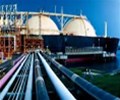Momentum in LNG shipping will build post-pandemic, says industry head

LNG is creating its own momentum as a credible shipping fuel with infrastructure developing well and uptake is likely to resume where it left off after the global COVID-19 pandemic eases, according to SEA-LNG chairman Peter Keller.
SEA-LNG is an industry group that brings together key players in the LNG maritime value chain.
“As soon as the shipping industry gets its feet back on the ground, which may take a while, a few years, the emphasis on environmental stewardship and reduction of greenhouse gases will certainly continue,” Keller told S&P Global Platts in an interview on June 26.
“We certainly see an environment of deep-sea new builds, and a significant percentage of those, half or better, should embrace advanced technologies such as LNG as an alternative fuel, especially when you consider the fact that the infrastructure that is needed to support LNG is growing very significantly,” he added.
LNG has taken time to carve out a niche in the market and while that may remain the case, there are big opportunities for growth. Keller noted there are 30 LNG bunker ships set to join the 150 plus strong fleet in the near future, harboring “very well for growth” and “certainly takes care of that chicken and egg question” over the building of LNG-powered ships and the rest of the infrastructure to support it.
Many industry players see a snowball effect in coming years as more ships are fitted with LNG, there is more infrastructure which then encourages further ships to be ordered.
Keller sees the important areas of LNG-fueled shipping growth to be in the cruise and container industry after key players have lit the way ahead and more generally for larger ships that are operating in the major trade lanes and those on consistent routes.
“I would expect the cruise industry’s use of LNG to continue as they recover. Certainly, the container industry, where the ships are going point to point to major ports in major trade lanes, should continue as CMA CGM has shown the way and I believe others are prepared to follow,” he noted.
WINDS OF CHANGE
The environmental momentum will “force shipowners to look at alternatives, at technologies that are available today that can provide the necessary benefits going forward,” Keller added. He said, “shipowners are cautious and they want to see the technology works and we are able to do that now.”
Keller gave the example of the two TOTE Shipholdings’ container ships run on LNG for the past four years as providing evidence of the viability of LNG as a marine fuel.
The shipping industry has been reluctant not just because of the high costs and second guessing better alternatives to follow, but because spending on a ship is a 20-year investment minimum. However, Keller believes that is about to change post-pandemic.
“Costs are coming down as we know as shipyards and industry get more comfortable with the technology, as the equipment manufacturers continue to make progress and now the infrastructure for the bunkering is pretty reasonable for the major trade lanes,” Keller said.
NO MAGIC FUEL
Keller pointed out while LNG doesn’t get the shipping industry where it needs to go, it at least gets the sector moving in the right direction, especially since other alternative fuels such as hydrogen, ammonia, and methanol are some way away.
The International Maritime Organization, which capped the amount of sulfur in fuel oil at 0.5% from January 1, 2020, from 3.5% previously, has a strategy of cutting carbon dioxide emissions per ship by 40% from 2008 levels by 2030. It then wants to cut the shipping industry’s total greenhouse gas emissions by 50% by 2050.
“Waiting is not an option, if we want to wait for that magic fuel it’s going to be 10-20 years before that is viable. Just look how long it has taken to develop LNG,” he warned, highlighting that it took decades for LNG to be where it is today.
S&P Global Platts Analytics Scenario Planning Service sees LNG growing to around 12% of total bunker fuel demand by 2040 from around 3% now, but with risks to the downside. Policy support in favor of LNG investment in shipping could easily flip to regulation against LNG as a fossil fuel.
Keller said LNG offers greater benefits than just the 21% reduction in greenhouse gas emissions from well-to-wake that the thinkstep 2019 study found. In a world dealing with global health pandemic, LNG’s air quality and human health benefits are a major plus factor. He explained that combined with bio-methane and potentially synthetics, LNG offers a pathway to meeting IMO 2050 targets: bio-methane can help solve issues around waste too.
“We have the perfect vehicle right now to move forward. Is it the ideal vehicle long-term? No. But with the introduction of bios and synthetics, we can certainly see a solid pathway to 2050 and beyond,” Keller explained. The study showed that LNG assets, with little modifications, can use non-fossil fuel methane, initially as drop-in fuels before potentially being scaled up.
Some oil majors such as Shell and Total are developing delivery infrastructure and backing its cause, while Qatar Petroleum recently announced a plan to spend big on LNG carriers, securing about 60% of the world’s LNG carriers building capacity, with the ships able to run on LNG too.
LNG appears to be getting the right kind of support to make a notable dent in the 300 million mt a year bunker market and COVID-19 is unlikely to derail it long-term.
Source: Platts

 Hellenic Shipping News Worldwide Hellenic Shipping News Worldwide, Online Daily Newspaper on Hellenic and International Shipping
Hellenic Shipping News Worldwide Hellenic Shipping News Worldwide, Online Daily Newspaper on Hellenic and International Shipping





















 PG-Software
PG-Software